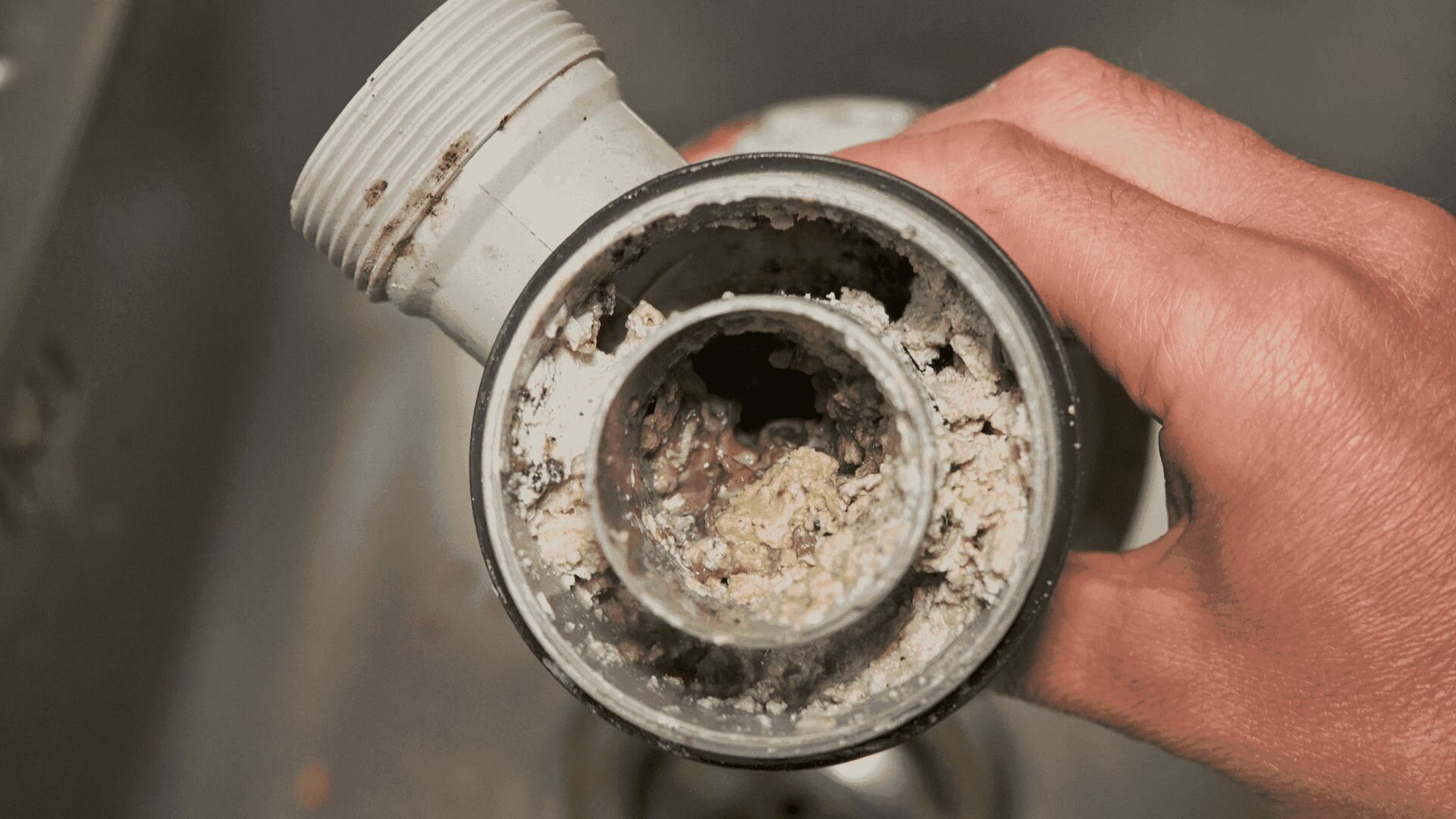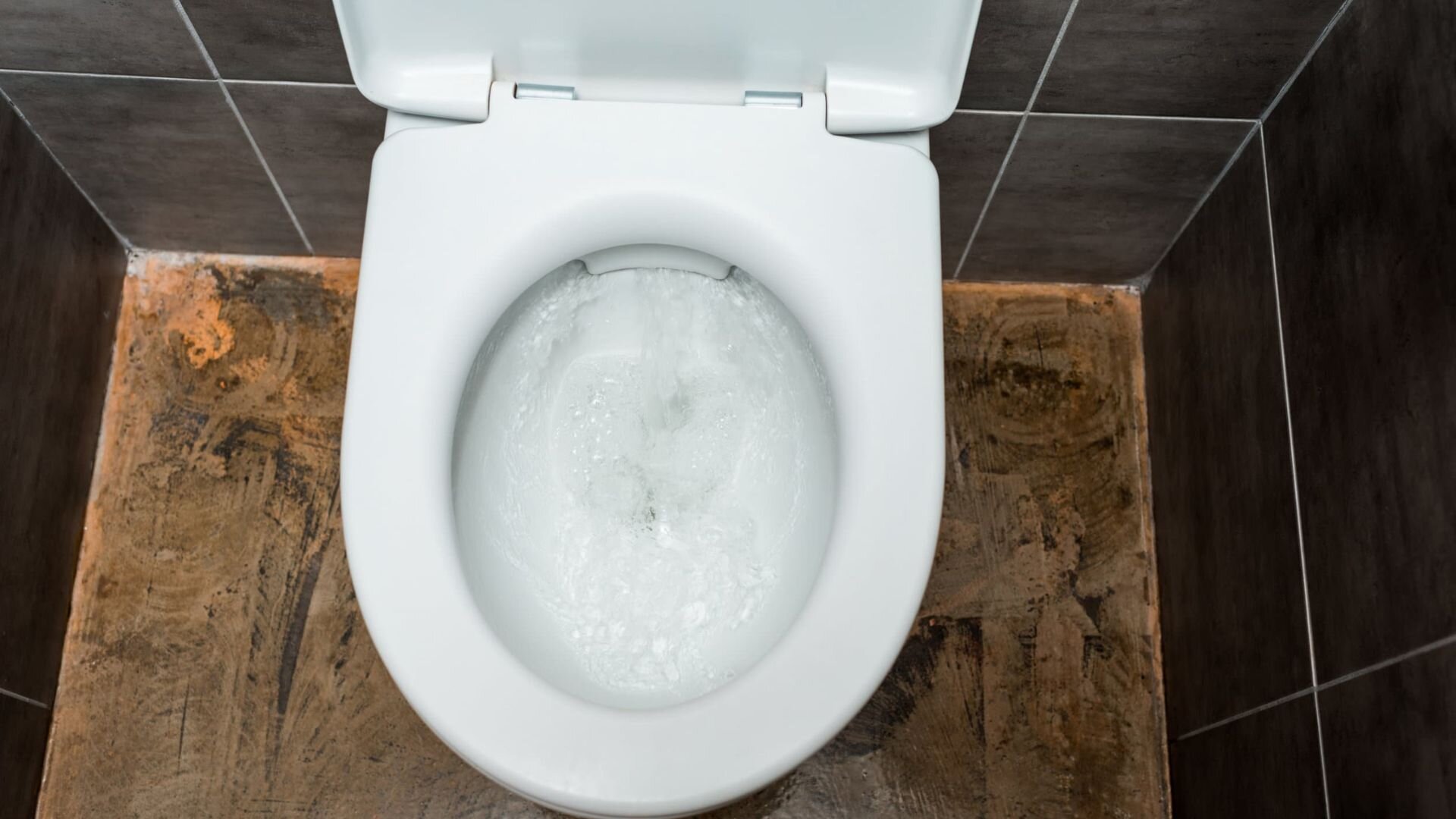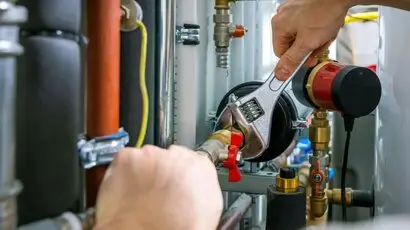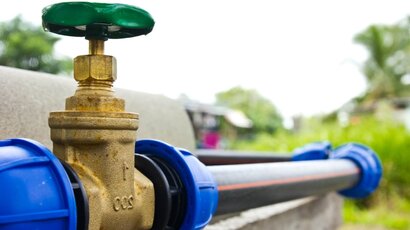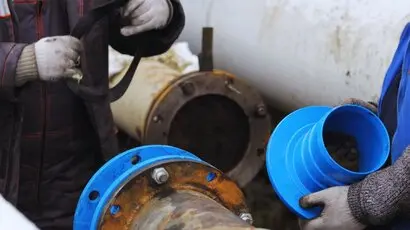If you own a home, facing plumbing issues is pretty much unavoidable. Whether it’s a clogged toilet, a leaky tap, or slow drains, these annoyances can really shake up your daily routine. But don’t worry, with the right know-how and solutions, you can tackle these plumbing hiccups head-on and stop more serious problems in their tracks.
In this guide, you’ll find handy tips, step-by-step guidance, and preventive strategies to keep your home’s plumbing in top shape. Let’s jump right in and uncover some smart solutions to ensure everything flows smoothly.
Leaky Faucets: Causes and Solutions
A dripping tap isn’t just annoying; it can spike your water bill too. It’s one of the most frequent plumbing headaches. Getting to the root of the problem is key for fixing it and saving water. Sometimes, a tiny drip hints at a bigger issue, potentially escalating into a plumbing emergency.
![]()
Worn-Out Washers
One of the primary causes of dripping faucets is worn-out washers. Over time, the constant friction between the washer and the valve seat can lead to deterioration and subsequent leaks. This can result in a need for hot water heater repairs, particularly if the issue persists for an extended period.
To resolve this problem, replacing the worn-out washer with a new one is important. Start by turning off the water supply and then disassembling the faucet handle. Remove the old washer and replace it with a new washer of the appropriate size. After reassembling the faucet, turn on the water to verify if the dripping has ceased.
Corroded Valves
Corroded valves often lead to those pesky drips. Hard water leaves mineral deposits on valves, failing to seal them properly and causing leaks. If left unchecked, this can even affect your water heaters, leading to bigger issues down the line.
Use a vinegar solution to clean the valves. Soak a cloth or paper towel in vinegar and wrap it around the affected area. Allow it to sit for a few hours, allowing the vinegar to dissolve the mineral deposits. Afterwards, remove the cloth and gently scrub the valves with a toothbrush to remove any remaining residue. Rinse the area thoroughly and check if the dripping has ceased.
High Water Pressure
Excessively high water pressure can also lead to dripping faucets. The forceful flow of water can place undue stress on the internal components, causing leaks. This issue can signify plumbing emergencies, and prompt action is crucial.
To rectify this, adjust the water pressure regulator. Locate the regulator, typically near the main water supply valve or the pressure-reducing valve. Use a wrench to turn the adjustment screw clockwise, reducing the pressure. Check if the dripping has stopped and adjusted to ensure adequate water pressure without causing plumbing problems.
Clogged Drains: Common Culprits and Effective Unclogging Methods
Dealing with a clogged drain can be inconvenient. It disrupts the normal functioning of your plumbing system and, if left untreated, can lead to slow drainage or even sewage backups. Read on to discover the typical culprits behind clogged drains and effective unclogging methods.
![]()
Hair
Hair is a primary culprit in clogged drains, particularly bathroom sinks and showers. Strands accumulate over time, forming blockages. To tackle this issue, use a drain snake or a zip tool to remove hair clogs. Insert the tool into the drain and rotate it to catch and pull out the hair. Use a drain cover and regularly clean the drain to prevent future clogs.
Grease and Soap Scum
Kitchen sinks often face clogs due to grease and soap scum build-up. Over time, these substances create stubborn blockages. A practical method to unclog such drains is using a mixture of baking soda and vinegar. Start by pouring boiling water down the drain to loosen debris, then add half a cup of baking soda and vinegar. Cover the drain and let the mixture sit for about 15 minutes. Finally, flush the drain with hot water to remove dissolved grease and soap scum.
Foreign Objects
Accidental drops or improper disposal of objects can obstruct drains. Items like jewellery, small toys, or sanitary products can impede water flow. It’s crucial not to force the object further down the drain. Instead, use a plunger to create suction and try to dislodge the object. If it remains stuck, seek professional assistance from a plumber to avoid causing further damage to the plumbing system.
Chemical Drain Cleaners
Steer clear of chemical drain cleaners if you can. They might work short-term, but they’re tough on pipes and not great for the environment in the long run.
If these methods don’t effectively unclog the drain, if low pressure continues, or if something more intense occurs, such as a sump pump failure - it’s advisable to call a plumber with the expertise and tools to handle more stubborn clogs.
Low Water Pressure: Identifying the Causes and Resolving the Issues
Identifying the underlying causes of water issues in your home or business, whether low water pressure, a clogged drain, basement water stains, or a leaky faucet, can help you resolve the issue and restore adequate water flow. The common causes of low water pressure include:
![]()
Mineral Deposits
Mineral build-up from hard water can restrict water flow and lead to low water pressure. Check the faucet aerators and showerheads for any clogs caused by mineral deposits. Soak the affected parts in vinegar overnight to dissolve the deposits, then rinse them thoroughly with water before reassembling them. Installing a water softener or a water conditioner can prevent future mineral build-up and ensure optimal water pressure.
Pipe Leaks
Hidden pipe leaks can disrupt water flow and cause low water pressure. Inspect visible pipes for signs of moisture or water stains, as they indicate potential leaks. Monitoring your water meter when no water is being used can also help detect continuous flow, suggesting a hidden leak. If you suspect a leak, it’s best to consult a professional plumber who can locate and repair the issue promptly, preventing further damage and restoring water pressure.
Valve Issues
Faulty or partially closed valves can contribute to low water pressure. Start by checking the main water supply valve to ensure it’s fully open. Additionally, individual shut-off valves for specific fixtures should also be fully open. If the valves are already open but low water pressure persists, it may be necessary to replace them.
Running Toilets: Understanding the Problem and DIY Fixes
There are several reasons a toilet might keep running. By understanding these issues and trying some DIY fixes, you can sort out the problem and save money. Don’t let a running toilet drain your resources; act now to conserve water. Let’s dive deeper:
![]()
Blocked Pipes
One common culprit behind a running toilet is a blocked drain. When the drain catch or pipes connected to the toilet get clogged by items such as toilet paper, water can continuously flow into the toilet bowl. To address this issue, start by turning off the water supply to the toilet. Next, inspect the drain catch and pipes for any blockages or obstructions. Clear them out using appropriate tools or seek professional help if you don’t feel confident.
Flapper Valve
A flapper leak is one of the most common causes of toilet issues. If the concrete surfaces around the toilet have cracked or shifted, it can disrupt the proper functioning of the flapper or other components, causing water leakage. Inspect the concrete surfaces around the bathroom for any visible damage or misalignment. If you spot any issues, consider repairing or resealing the concrete to restore the toilet’s proper operation.
Faulty Fill Valves
A faulty fill valve can also cause a running toilet. The fill valve is responsible for refilling the tank after each flush. If the fill valve doesn’t shut off properly, it can allow water to flow continuously into the tank, causing the toilet to run. To fix this issue, locate the fill valve in the toilet tank and adjust the float mechanism. The float should be positioned at a level that triggers the fill valve to shut off when the tank is full. If changing the float doesn’t resolve the problem, consider replacing the fill valve with a new one.
Chain Issues
Sometimes, a running toilet can be caused by a chain problem. The chain connects the flush handle to the flapper, allowing it to lift and release water into the bowl when the toilet is flushed. If the chain is too loose or tangled, it can prevent the flapper from sealing correctly, resulting in a running toilet. To fix this issue, open the toilet tank and ensure that the chain has enough slack to allow the flapper to close completely. Adjust the chain length if necessary, providing the flapper can seal tightly when the toilet is unused.
Damaged Pipes
In some instances, running toilets can be attributed to problems with copper pipes or excessive water pressure. If the copper pipes are damaged, or there is excessive pressure in the water line, it can result in continuous water flow and a running toilet. Inspect the copper pipes for any cracks or leaks and address them promptly. A pressure regulator should also be installed to control water pressure and prevent future issues.
Leaky Pipes: Causes, Detection, and Temporary Repairs
Leaky pipes can be a significant headache for homeowners. Not only do they waste water and drive up utility bills, but they can also cause damage to your property if left unattended.
Understanding the causes of leaky pipes, knowing how to detect them, and learning some temporary repair techniques can help you manage the situation until you can get professional assistance.
![]()
Causes of Leaky Pipes
Various factors can lead to plumbing leaks at home. Corrosion is pretty common—pipes tend to wear out over time because of chemical reactions or environmental conditions, which can lead to cracks and leaks.
Another potential issue is high water pressure, which puts excessive strain on the pipes and can cause leaks to develop. If you consistently experience high water pressure, installing a pressure regulator to protect your plumbing system is crucial.
Additionally, the joints and connections where pipes meet can be vulnerable to leaks. If these fittings become loose or degrade over time, they may also result in leaks. Regular inspection and maintenance of your plumbing system can help identify and address these potential problem areas before they escalate.
Detecting Leaky Pipes
There are a few signs you can look out for to detect potential plumbing leaks in your home. Check for visible water stains or discolouration on walls, ceilings, or floors, especially near pipes. These stains could indicate an underlying leak.
Listen for dripping sounds, particularly behind walls, under floors, or in your ceilings. Constant dripping noises may suggest a hidden leak. Another test you can conduct is to turn off all water sources in your home and monitor your water meter.
If the meter continues to run or shows movement, it could be a sign of a leak in your plumbing system. Being attentive to these signs can help you identify and address leaks promptly.
Temporary Repairs for Leaky Pipes
When dealing with small leaks, there are temporary repair methods you can try before calling a professional plumber. Pipe clamps or tightly wrapped rubber tape around the affected area can help temporarily reduce or stop the leak. Another option is to use epoxy putty, which can be kneaded and applied over the leak to form a temporary seal.
For damaged pipe sections, pipe sleeves or compression fittings can temporarily fix the problem by sliding over the damaged area. However, it’s important to remember that these solutions are temporary, and it’s crucial to seek professional assistance from a licensed plumber for a permanent repair. Plumbers have the expertise and tools to assess the situation accurately and provide a lasting solution.
Preventive Maintenance Tips for a Healthy Plumbing System
Maintaining a healthy plumbing system is crucial to saving money in the long run, ensuring the smooth functioning of your home’s water supply. By implementing preventive maintenance measures, you can extend the lifespan of your plumbing system and minimise the risk of major plumbing issues.
Here are some essential tips to help you keep your plumbing system in top shape:
![]()
- Regular Inspections: Conduct periodic inspections of your plumbing system to identify any signs of leaks, corrosion, or damage. Check sinks, water lines, heating elements, toilets, and nearby pipes for any visible plumbing leaks or water stains. If you notice any issues, address them promptly to prevent further damage.
- Monitor Water Pressure: Monitor your water pressure to ensure it is within a safe range. If it is consistently high, consider installing a pressure regulator to maintain a stable and safe pressure level.
- Drain Maintenance: Prevent clogged drains and issues in your sewer systems by practising good drain maintenance habits. Avoid pouring grease, oil, or food scraps down the kitchen sink, and use drain strainers to catch hair and debris in the bathroom drains.
- Water Heater Maintenance: Maintain your water heater by draining and flushing it annually to remove sediment and mineral deposits that can affect its efficiency. Check the temperature, pilot light, and pressure relief valve periodically to ensure they function correctly. Not all water heaters are the same, so if you notice any issues with your water heater, such as insufficient hot water or strange noises, contact a professional for a thorough inspection.
- Insulate Exposed Pipes: In colder climates, insulating exposed pipes is essential to prevent freezing and potential pipe bursts. Use pipe insulation sleeves or wrap pipes with heat tape to protect them from freezing temperatures.
- Avoid Chemical Drain Cleaners: Instead of relying on chemical drain cleaners to clear clogs, opt for natural alternatives or use a plunger or plumbing snake. Chemical drain cleaners can be harsh on your pipes and cause corrosion or damage over time.
- Mindful Landscaping: When planning your landscaping, be aware of the location of underground pipes and sewer lines. Avoid planting trees or shrubs with invasive root systems near these areas, as roots can infiltrate and damage the pipes.
- Professional Inspections: Schedule regular professional inspections of your plumbing system. A licensed plumber can thoroughly assess your system, identify potential issues, and provide appropriate maintenance recommendations.
- Educate Household Members: Teach everyone in your household about proper plumbing practices. Emphasise the importance of avoiding flushing non-flushable items down the toilet and using drains responsibly.
Conquer Common Plumbing Problems: Expert Solutions for a Smooth-Running Home
Common residential plumbing problems can be frustrating, but with the proper knowledge and tools, many can be resolved effectively. By understanding the causes of common plumbing issues, homeowners can take proactive steps to keep their plumbing systems in good working order.
Remember, when in doubt, it’s best to consult with a trusted plumbing professional to ensure the safety and integrity of your plumbing system. With WP Plumbing by your side, you can have peace of mind knowing that your residential plumbing needs are in capable hands. Don’t let plumbing problems disrupt your daily life – take action and enjoy the benefits of a well-maintained plumbing system.


